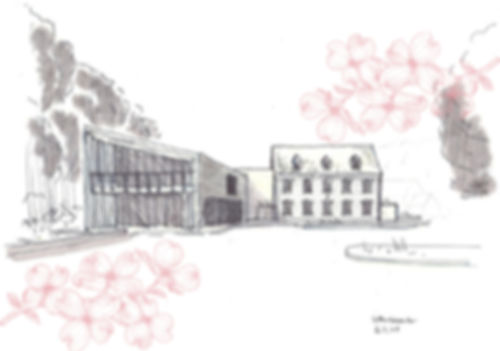63 Years in Print
Silent Spring
Perhaps the finest nature writer of the Twentieth Century, Rachel Carson (1907-1964) is remembered more today as the woman who challenged the notion that humans could obtain mastery over nature by chemicals, bombs and space travel than for her studies of ocean life. Her sensational book Silent Spring (1962) warned of the dangers to all natural systems from the misuse of chemical pesticides such as DDT, and questioned the scope and direction of modern science, initiated the contemporary environmental movement.

Welcome to our website dedicated to the environmental teachings of Rachel Carson! Through my journey of writing and publishing the biography Rachel Carson: Witness for Nature, I have delved deeply into the life and work of this incredible individual.

Explore the life and work of Rachel Carson, one of the 20th century's most influential voices in literature and environmentalism. This website, based on the biography Witness for Nature, aims to educate readers about Carson's life, legacy, and the impact of her revolutionary text, Silent Spring.
One Way To Open Your Eyes Is To Ask Yourself, What if I Had Never Seen This Before? What if I Knew I Would Never See It Again?
- Rachel Carson

Carson was a student of nature, a born ecologist before that science was defined, and a writer who found that the natural world gave her something to write about. Born in Springdale, Pennsylvania, upstream from the industrial behemoth of Pittsburgh, she became a marine scientist working for the U.S. Fish and Wildlife Service in Washington, DC, primarily as a writer and editor. She was always aware of the impact that humans had on the natural world. Her first book, Under the Sea-Wind (1941) was a gripping account of the interactions of a sea bird, a fish and an eel -- who shared life in the open seas. A canny scholar working in government during World War II, Carson took advantage of the latest scientific material for her next book, The Sea Around Us (1951) which was nothing short of a biography of the sea. It became an international best-seller, raised the consciousness of a generation, and made Rachel Carson the trusted public voice of science in America. The Edge of the Sea (1955) brought Carson’s focus on the ecosystems of the eastern coast from Maine to Florida. All three books were physical explanations of life, all drenched with miracle of what happens to life in and near the sea.
In her books on the sea Carson wrote about geologic discoveries from submarine technology and underwater research -- of how islands were formed, how currents change and merge, how temperature affects sea life, and how erosion impacts not just shore lines but salinity, fish populations, and tiny micro-organisms. Even in the 1950's, Carson’s ecological vision of the oceans shows her embrace of a larger environmental ethic which could lead to the sustainability of nature’s interactive and interdependent systems. Climate change, rising sea-levels, melting Arctic glaciers, collapsing bird and animal populations, crumbling geological faults -- all are part of Carson’s work. But how, she wondered, would the educated public be kept informed of these challenges to life itself? What was the public's "right to know"?


In her books on the sea Carson wrote about geologic discoveries from submarine technology and underwater research -- of how islands were formed, how currents change and merge, how temperature affects sea life, and how erosion impacts not just shore lines but salinity, fish populations, and tiny micro-organisms. Even in the 1950's, Carson’s ecological vision of the oceans shows her embrace of a larger environmental ethic which could lead to the sustainability of nature’s interactive and interdependent systems. Climate change, rising sea-levels, melting Arctic glaciers, collapsing bird and animal populations, crumbling geological faults -- all are part of Carson’s work. But how, she wondered, would the educated public be kept informed of these challenges to life itself? What was the public's "right to know"?
Evidence of the widespread misuse of organic chemical pesticides government and industry after World War II prompted Carson to reluctantly speak out not just about the immediate threat to humans and non-human nature from unwitting chemical exposure, but also to question government and private science's assumption that human domination of nature was the correct course for the future. In Silent Spring Carson asked the hard questions about whether and why humans had the right to control nature; to decide who lives or dies, to poison or to destroy non-human life. In showing that all biological systems were dynamic and by urging the public to question authority, to ask "who speaks, and why"? Rachel Carson became a social revolutionary, and Silent Spring became the handbook for the future of all life on Earth.


Welcome to our special collection of pages dedicated to the life of Rachel Carson, an inspiring pioneer in the world of environmental science and conservation.
Journey through her remarkable life, from her early love for nature and writing to her groundbreaking research and advocacy that shaped the modern environmental movement.
Discover the enduring legacy of Rachel Carson, a pioneering environmentalist and author of the groundbreaking book, "Silent Spring." Explore how her courageous work ignited a global environmental movement, inspired generations of eco-activists, and led to significant policy changes that continue to shape our world today.
Our comprehensive collection of resources will help you explore her groundbreaking research, literary works, and the numerous topics related to her life's work. Gain a deeper understanding of Carson's passion for the environment and her relentless pursuit of the truth, which ultimately led to a worldwide environmental movement. Join us in celebrating her remarkable contributions and learn how her legacy continues to inspire and shape our understanding of the natural world.
Underlying all of these problems of introducing contamination into our world is the question of moral responsibility -- responsibility not only to our own generation but to those of the future.
- Rachel Carson




